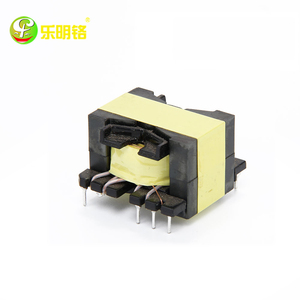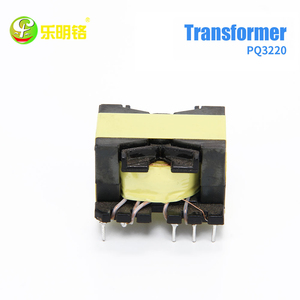(326 products available)

























































































































































































Trafo oil is a mineral-based insulating and cooling oil used in transformers. It helps insulate and cool the transformer, thereby enhancing its performance and lifespan. There are different kinds of transformer oil based on their specifications and usage. They include:
Natural ester oil
A natural ester oil is made from natural fats and oils from plant and animal sources. It has excellent insulating properties and a high fire point, making it suitable for use in transformers where fire safety is paramount. Its biodegradability also makes it an environmentally friendly option. However, the initial cost of natural ester oil can be high, and it may require modifications to the transformer to accommodate the oil.
Synthetic ester oil
This is derived from synthetic compounds. It offers superior thermal conductivity, oxidation stability, and a wider temperature range. Because of these properties, synthetic ester oil is used in high-performance transformers that operate in extreme conditions. However, they are expensive and require specialized disposal methods.
Mineral oil
Mineral oil is the most commonly used transformer oil. It has good insulating and cooling properties, is readily available, and is cost-effective. However, mineral oil has a low fire point, making it less suitable for use in high-risk fire areas.
Vacuum circuit breaker oil
This is used in transformer applications with a vacuum circuit breaker. It helps extinguish the arc that forms when the circuit breaker opens and provides insulation between the contacts. VCB oil has a high dielectric strength and low viscosity, allowing it to flow quickly to extinguish the arc. It is also formulated to resist thermal breakdown and oxidation to ensure long-lasting performance. VCB oil is mineral-based and contains additives that enhance its arcing and insulating properties.
Purity and Chemical Composition
The purity of transformer oil is very important. The oil must have very few chemicals apart from what is supposed to be there. These extra chemicals can react with the oil and cause it to degrade. The initial chemicals in the oil must also remain there. Any change to the oil's chemistry can reduce its effectiveness at doing its job. So, it is best to choose oil that stays pure over time and does not develop impurities or chemical changes that could harm its performance.
Thermal Properties
The oil must have a high boiling point and low freezing point. This helps it work well in different temperatures. An oil with a low boiling point could evaporate and leave the transformer without enough oil. An oil that freezes at a high point will freeze in that spot and not flow around the transformer to cool it. This makes the transformer overheat. So, an oil with thermal properties that suit the transformer's location will perform best.
Oxidation Stability
Transformer oil can break down when it reacts with oxygen. This creates sludge that clogs the transformer. It also changes the oil, making it less effective. Choosing an oil that resists oxidation is important. This oil won't break down even over a long time. It will stay clean and work well, protecting the transformer from overheating.
Electrical Properties
The oil must be a good insulator to stop electricity from flowing through it. If it is not, it could cause a short circuit in the transformer. The oil also needs to help transfer heat away from hot spots. A good oil will protect the transformer from electrical problems and help it last a long time.
Cost
Several oils cost different amounts. The cheaper oils may not perform as well over time. This could make the transformer need repairs more often. The expensive oils are better quality and last longer. So, less money will be spent on maintenance. It is usually worth it to choose the more expensive oil to save money in the long run.
Transformer oil is a product that requires thorough understanding before usage. Below are some of the ways to use and install it.
Purification
Before using the oil, it has to be purified first. This is done by filtering it to remove any dissolved gases. The oil is then dehydrated to remove moisture. These two processes ensure that the oil has a high dielectric strength.
Choosing the Right Type of Oil
It is important to choose the right oil for the transformer. If the transformer is small and used indoors, mineral oil should work fine. However, for large transformers that are exposed to the environment, synthetic esters would be more suitable.
Consider the Temperature
When using transformer oil in areas with high temperatures, it is advisable to use oils that have high flash points. This helps to reduce the risk of fire.
Regular Maintenance
Regular maintenance of the oil is crucial. This includes monitoring the temperature, moisture levels, and dissolved gases. These parameters can help detect problems early enough before they worsen.
Prepare the Transformer
Before installing the oil, the transformer has to be drained. This will remove the old oil and any sludge build-up. The transformer is then cleaned to remove any moisture.
Heat the Oil
The new oil has to be heated before pouring it into the transformer. Heating the oil reduces its viscosity, enabling it to fill the transformer. The oil is then poured into the transformer using a pumping system.
Vacuum Filling
During installation, a vacuum is maintained in the transformer. This helps to prevent any moisture from entering the transformer. After pouring the oil, the transformer is then sealed while maintaining the vacuum.
Monitor the Temperature
The oil should be monitored regularly to check its temperature. If the temperature exceeds the allowable limit, it indicates that the oil is aging. It also shows that the transformer is overloaded.
Watch Out for Moisture
Moisture is the number one enemy of transformer oil. It reduces the dielectric strength of the oil. Over time, the moisture can lead to partial discharge, damaging the transformer. Consider using oil with a high affinity for water to reduce moisture levels.
Dissolved Gases
Dissolved gases in transformer oil can indicate the condition of the transformer. Certain gases can be produced if there is overheating, arcing, or partial discharge. Regularly monitor the dissolved gases to know the state of the transformer.
Transformer oil serves two primary functions in a transformer. It cools the transformer by dissipating heat from the windings and core to the transformer's steel case. This prevents overheating, which can shorten the transformer's life. The oil also insulates the transformer windings from each other and from the transformer's steel case. This prevents electrical arcing, which could damage the transformer.
Transformer oil has some important features that make it suitable for these functions. It has a high flash point, which means it can withstand high temperatures without catching fire. This provides a margin of safety for the transformer. The oil also has a low viscosity, which allows it to circulate easily through the transformer's cooling channels. It is also non-corrosive and does not react with the metals inside the transformer.
The design of transformer oil is also important for its performance. It is a clear, light-colored oil that is free of impurities. These impurities could affect its insulating and cooling properties. The oil is also treated with additives that improve its performance. For example, some additives inhibit the formation of sludge over time. Other additives make the oil more stable at high temperatures.
Q1. What is the shelf life of transformer oil?
A1. The shelf life of transformer oil depends on its type. For example, mineral transformer oil can last for several years, up to 10 years, when stored properly. On the other hand, synthetic transformer oil has a shelf life of 5 to 8 years. Many manufacturers provide labels on the products indicating the best-before date.
Q2. How to store transformer oil properly?
A2. Proper storage of transformer oil is crucial to ensure it maintains its properties and has a higher shelf life. Here are some tips for storing transformer oil.
Q3. Can transformer oil be reused?
A3. Yes, transformer oil can be reused. However, it needs to be treated and processed to remove the impurities and moisture before it can be used again. Using reclaimed transformer oil is cost-effective and environmentally friendly.
The web search volume for the keyword "trafo oil" in the Personal Care & Household Cleaning category shows a consistent average monthly web search volume of 40. Over the past year, this keyword experienced a significant decline, with a three-month change of -40% and a one-year change of -40%. The detailed monthly data from December 2023 to November 2024 reveals fluctuations, with web search volumes ranging from 20 to 50.
Analyzing the monthly trends, "trafo oil" peaked at 50 web searches in December 2023 and September 2024, indicating potential seasonal interest or specific market events during these months. Conversely, the lowest web search volume occurred in April 2024, with only 20 web searches, suggesting a dip in consumer interest or market availability during that period. The web search volume then gradually recovered, stabilizing around 40 web searches per month from June to August 2024.
The web search volume pattern for "trafo oil" suggests a variable but recovering interest over the year. Despite the overall decline, there are noticeable recoveries and peaks that could be attributed to fluctuating market demands or seasonal consumer behaviors. This keyword's journey through the year underlines the importance of monitoring market trends and consumer behavior closely to adapt marketing and stock strategies accordingly.